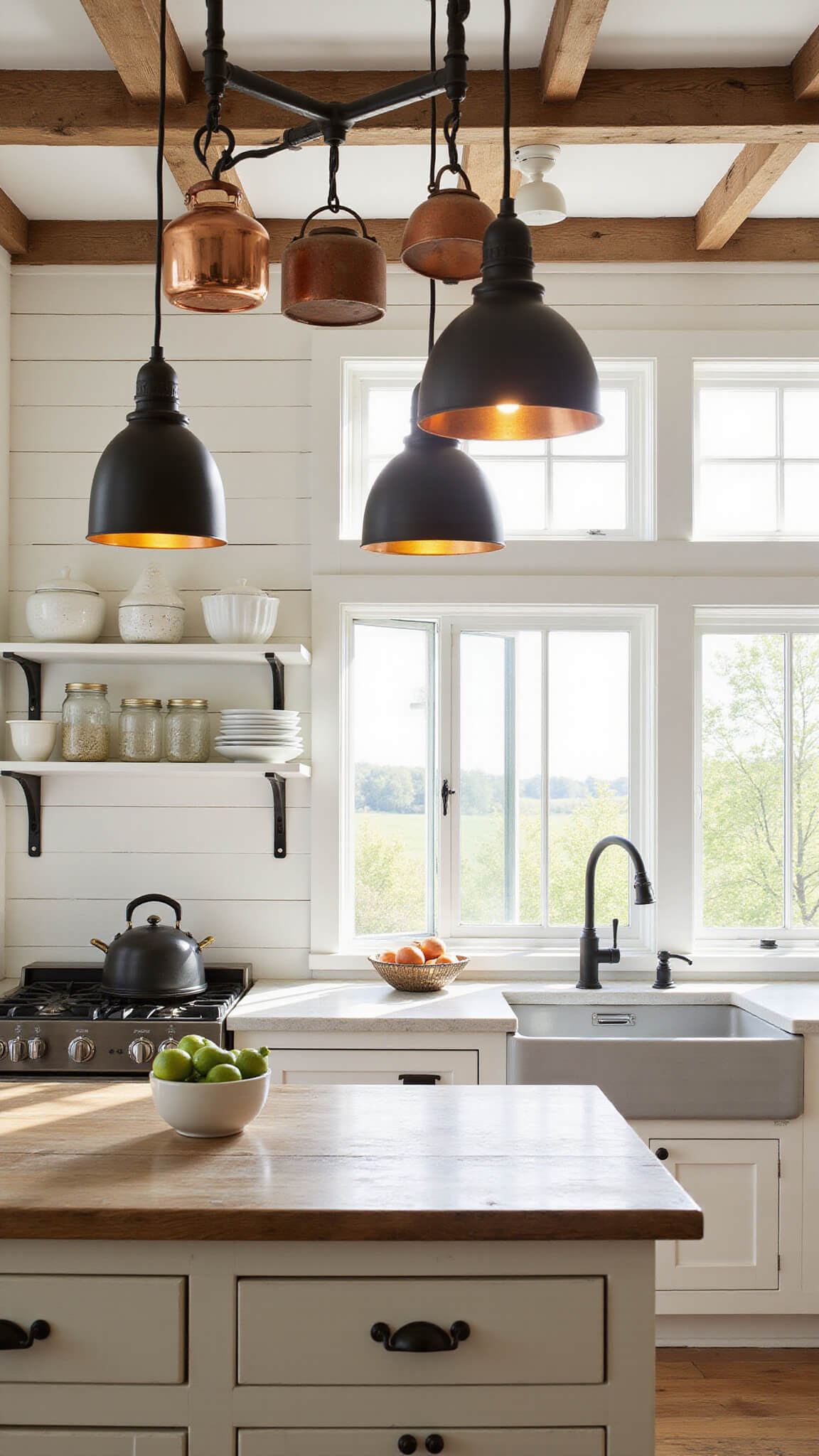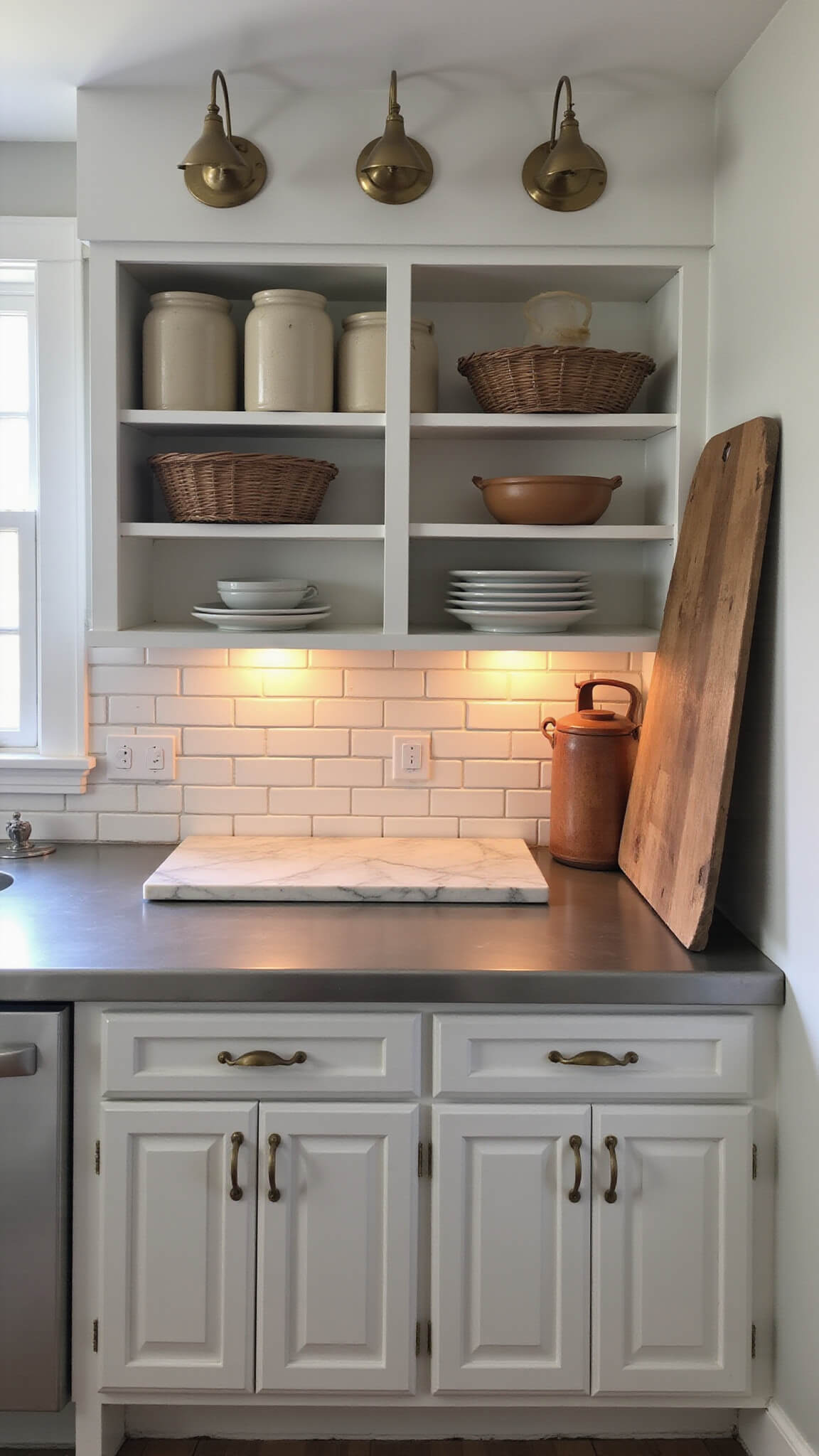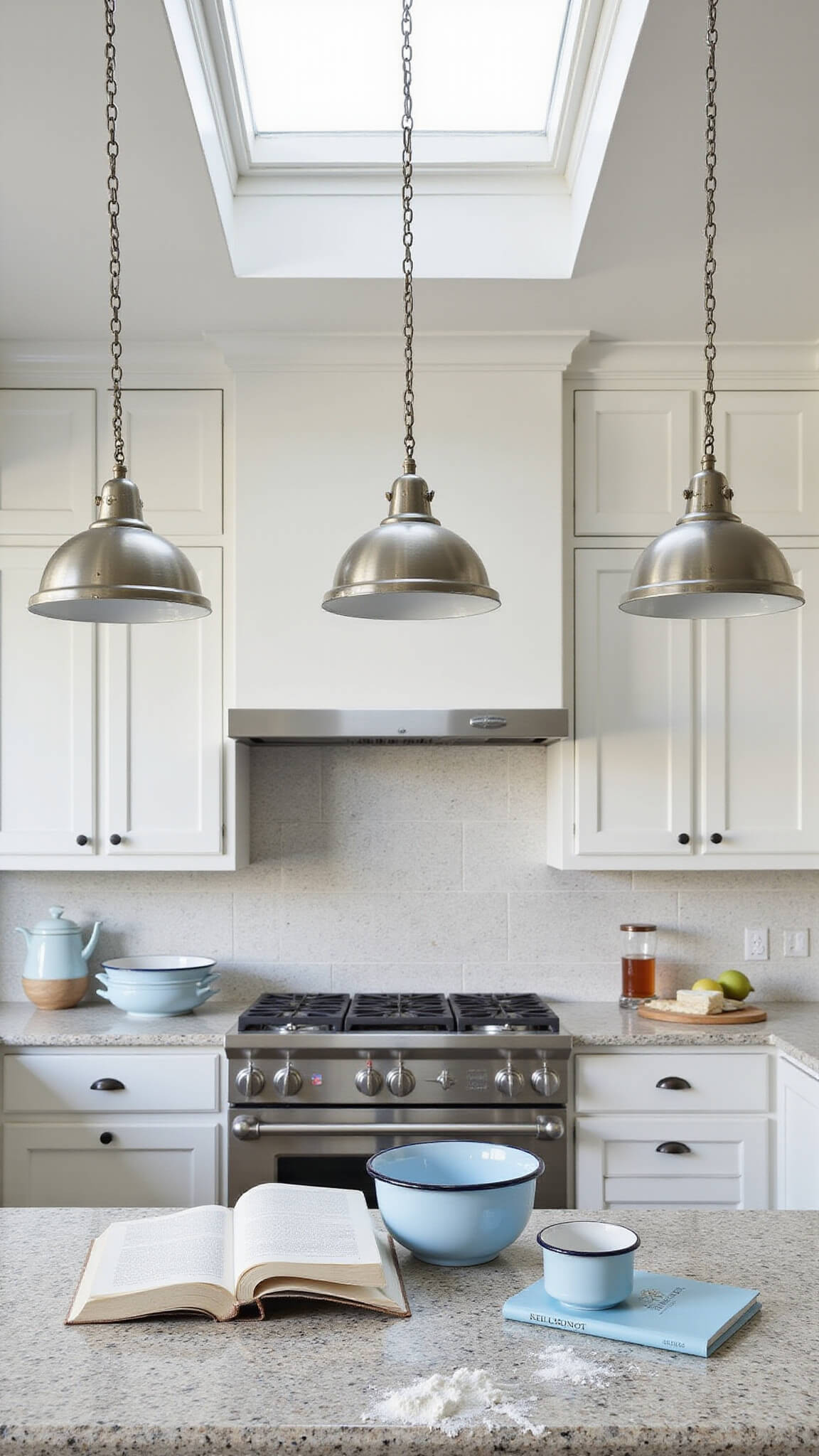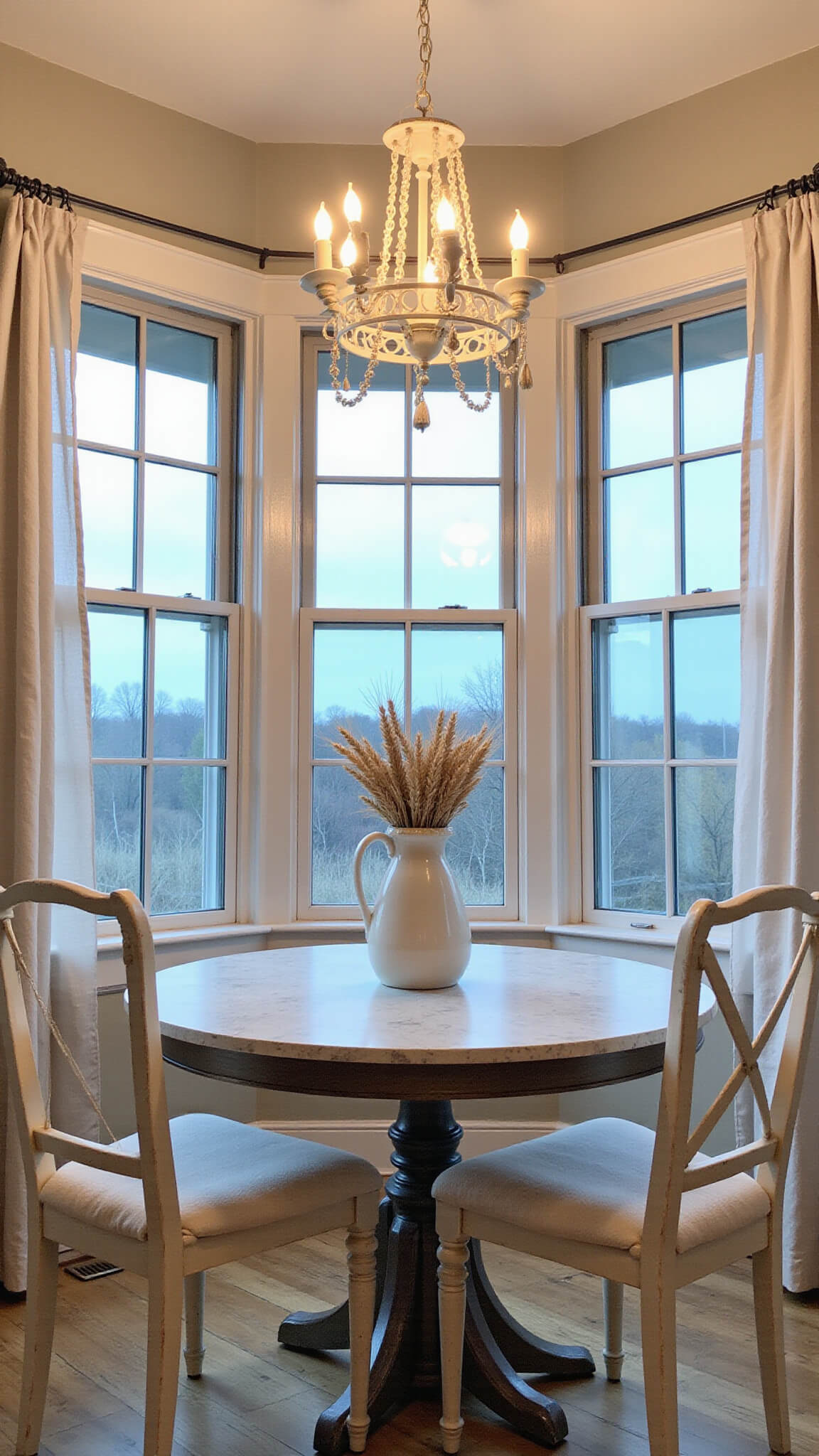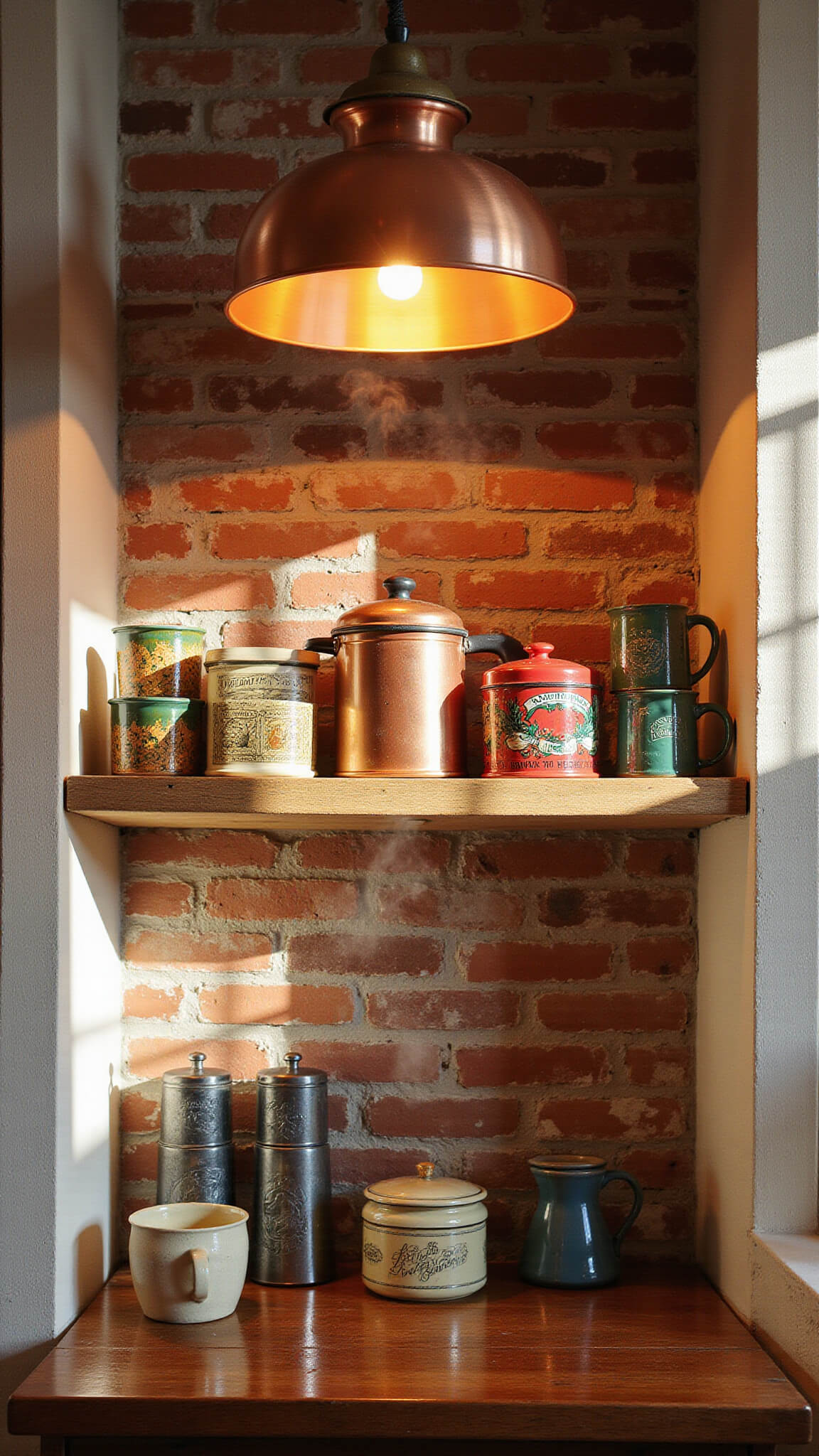Why Farmhouse Lighting Matters More Than You Think
The lighting in your farmhouse kitchen and dining area sets the entire mood.
Too harsh? Your beautiful wooden table looks flat and uninviting.
Too dim? Nobody can see the gorgeous details in your hand-crafted centerpiece.
I learned this the hard way when I hosted my first holiday dinner in my newly renovated farmhouse kitchen. The overhead lighting was so intense that everyone looked like they were being interrogated rather than enjoying my pot roast!
Essential Lighting Elements for Farmhouse Kitchens
Your farmhouse kitchen deserves lighting that enhances its rustic charm while providing functional illumination. Here’s what works best:
Statement Pendant Lights
- Choose metal finishes like wrought iron or brushed bronze
- Look for simple, clean designs with industrial touches
- Hang them 30-36 inches above your island or table
Layered Lighting Sources
- Combine overhead fixtures with task lighting
- Add under-cabinet lights for practical food prep areas
- Include accent lighting to highlight architectural features
Natural Light Maximization
- Keep window treatments minimal and light
- Use mirrors strategically to bounce daylight around
- Position your dining table near windows when possible
The beauty of farmhouse style lighting is how it combines form and function. Your fixtures aren’t just practical items – they’re statement pieces that tell your home’s story.
Creating the Perfect Lighting Plan
Before running out to buy new fixtures, take some time to map out your lighting needs.
First, identify the main activity zones in your kitchen and dining space.
Where do you chop vegetables? Where do you eat? Where do you display your grandmother’s china collection?
Each zone needs its own lighting strategy.
Next, think about the mood you want to create. Farmhouse style typically features warm, soft lighting rather than clinical brightness. I recommend bulbs in the 2700-3000K range for that perfect golden glow.
The Heart of Farmhouse Dining: Chandelier Selection
If there’s one lighting element that can make or break your farmhouse dining area, it’s the chandelier. This isn’t just a light fixture – it’s the jewelry of your dining space.
Size Matters
For proper scaling, add the length and width of your dining area in feet. That number in inches is your ideal chandelier diameter.
For example, a 10×12 foot dining area would work well with a 22-inch diameter chandelier.
Height Considerations
- Hang your chandelier about 30-36 inches above your table surface
- For rooms with higher ceilings, add 3 inches of height for each additional foot of ceiling
- Make sure nobody bumps their head when standing up!
I once installed a gorgeous wrought iron chandelier that was perfect in every way except height. My tall brother-in-law nearly knocked himself unconscious during Sunday dinner! Don’t make my mistake – measure twice, hang once.
Budget-Friendly Farmhouse Lighting Ideas
DIY Lighting Projects
- Transform mason jars into pendant lights
- Repurpose old metal baskets as shade covers
- Create a chandelier from reclaimed wood and simple bulb fixtures
Strategic Shopping
- Check architectural salvage yards for authentic vintage pieces
- Watch for seasonal sales at home improvement stores
- Consider floor models which often sell at discount
Smart Upgrades
- Sometimes just changing bulb types can transform a space
- Replace harsh cool bulbs with warm ones
- Add dimmer switches to existing fixtures for flexibility
My favorite budget hack is mixing high and low pieces. I splurged on one statement chandelier over my dining table but used inexpensive pendants from a big box store over my island. Nobody can tell the difference, but my wallet sure appreciated it!
Capturing Your Farmhouse Lighting Through Photography
Best Times to Shoot
- Early morning or late afternoon for that golden hour glow
- Overcast days provide soft, diffused light
- Evening shots with your lighting glowing warmly against a darkening window
Camera Settings
- Use aperture priority mode (f/4 to f/5.6) for a nice depth of field
- Keep ISO as low as possible to avoid graininess
- Consider using a tripod for sharper images in lower light
Styling for Photos
- Add organic elements like fresh flowers or fruit
- Include cozy textiles like linen napkins or a table runner
- Keep food styling simple and rustic (think artisan bread or a wooden bowl of apples)
When I photograph farmhouse lighting, I always make sure to capture both the fixtures themselves and the quality of light they cast on surfaces. That interplay of light and shadow on a wooden table can be absolutely magical.
Seasonal Adaptations for Your Farmhouse Lighting
Spring/Summer Lighting
- Brighten bulbs slightly (try 3000K)
- Add glass elements that catch and reflect light
- Hang botanical elements like dried herbs or lavender from fixtures
Fall/Winter Lighting
- Warm up your color temperature (2700K is perfect)
- Add candles for layered lighting
- Consider string lights for extra coziness during holidays
- Incorporate metallic accents that glow in warm light


